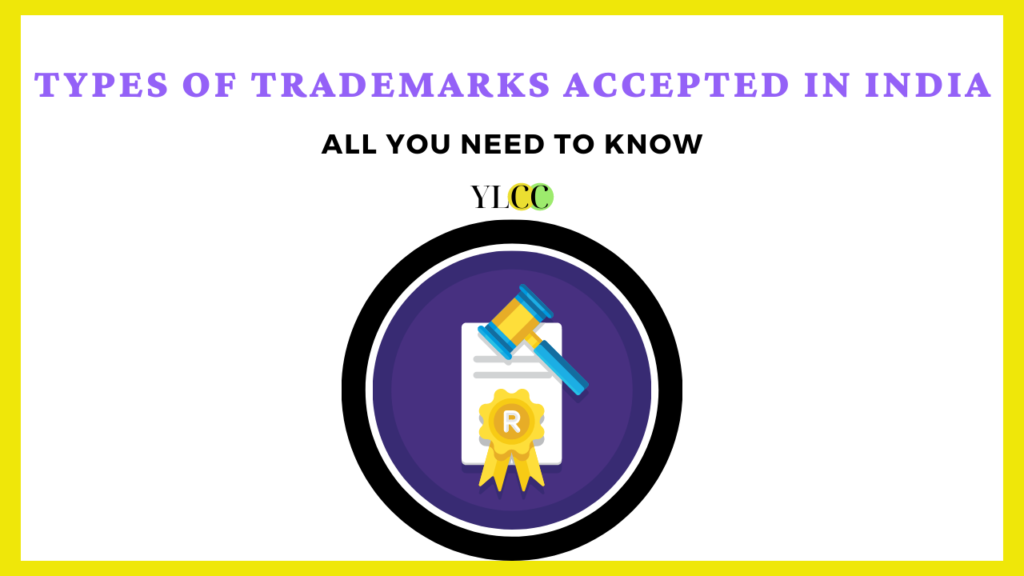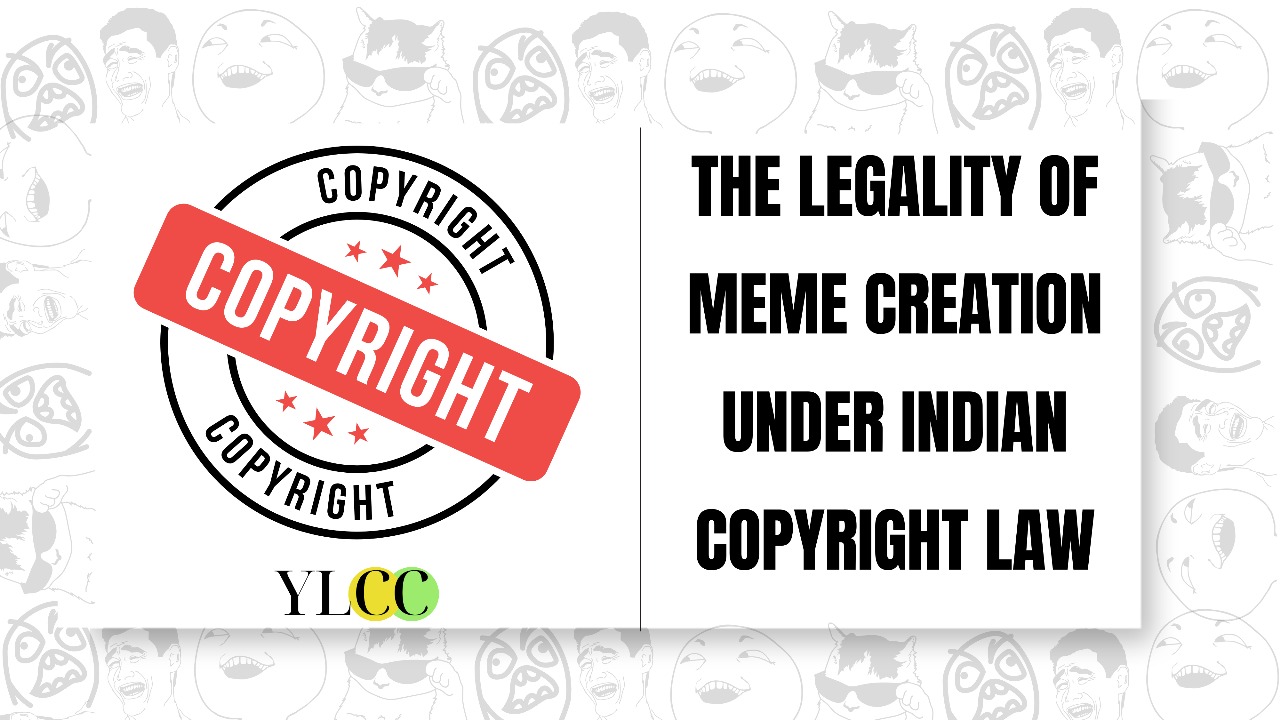
INTRODUCTION
Trademark is a mark that helps us in the identification of the product by differentiating it from other goods and services belonging to the same class. It also aids the product developers when there is competition in the market. Section 2(zb) of the Trademark Act, 1999[1] specifies trademark as a mark capable of graphical representation and capable of distinction of goods and services owned by one person and another and also includes the shape of goods, colours and packaging. The main function of the trademark is to be unique between the same class of services and goods and henceforth, a distinctive trademark is the best trademark.
It also gives protection for a symbol, word, phrase, design, logo or combination of them. Furthermore, it gives an identity to a product which in turn represents a source of particular goods and services. In India, Trademark is registered and protected under the Trademark Act, 1999[2] and common law. However, as per the Trademark Act, it is not mandatory to register your trademark and a trademark once registered should provide legal rights and protection to its owner for 10 years. Thereafter, such a period is extendable upon renewal. Furthermore, the benefits of a trademark include ease to market, creation of distinctive identity and also becoming a source identifier.
REQUIREMENT OF TRADEMARK
It is important to understand the difference between each type of trademark before filing an application for a trademark as it should not be generic and it must be distinctive and unique in order to seek legal protection under Trademark Act, 1999. If the particular trademark seems to be a little similar then one may revise the mark to get it registered as a trademark.
The distinctiveness of a trademark nature is extremely important as it gives identity to the product as before the regulation of laws, there was an immense amount of ambiguity and confusion in the market. Furthermore, it was a tedious task to get brand loyalty from the public as they were not able to identify the goods and services.
REGISTRATION OF TRADEMARK
For the registration of Trademark, one needs to file a trademark application which further goes to the registry office wherein the registry issues an official receipt that has the filing date and application number. In pursuance to the same, the Trademark office examines the application to ensure whether it can be registered under the Act or not and if any objection is raised against the registration then the concerned registry issues an examination report to the applicant of the said trademark. Thereafter, the applicant is supposed to file a written response to the same or it is also required to give evidence of the acquired distinctiveness which leads to the posting of the date with the examiner.
Thereafter, if the registrar believes that the trademark can be applied then he/she issues a letter of acceptance to the applicant and after which the trademark is published in the Trademark Journal. After the publication of the trademark, it is open for opposition for 4 months from the date of publication. And, if no objection is raised in the forthcoming 4 months then the certificate is issued and in case of objection then both parties are given adequate opportunities to be heard. Overall, the process of trademark registration is lengthy and it generally accounts for 18-24 months to acquire the registration in cases of no objections or oppositions.
TYPES OF TRADEMARKS
PRODUCT MARK
Product mark deals with the product or goods but not with services. It is used to recognize the provider, reputation and origin of the particular product. The applications for a trademark filed under Class 1-34 of the Fourth Schedule to the Trade Marks Rules, 2002[3] are usually termed as product marks.
SERVICE MARK
A Service mark is more or less similar to a product mark. However, it is specifically used to identify a service and not a particular product. The applications of this trademark can be filed under Class 35-45 of the Fourth schedule to Trademark Rules, 2002.[4]
WORD MARK
A trademark is usually filed under a wordmark or a device mark. In the former case, only a word or text is used to represent a trademark, without any additional elements. And, this type of registration provides the widest legal protection to a trademark as it allows the owner to use such a wordmark in all styles, forms and representations. Example- LITTLE HEARTS, COCA-COLA
DEVICE MARK
The device mark caters for an artistic element like symbols, artistic, pictorial depiction coupled with the element of the word mark and comprises multiple artistic elements along with the wordmark. The said mark present in a device mark can be a set of both trademarkable as well as non-trademarkable features. The protection of such a type of mark is granted over the composite mark but not the individual elements.
A device mark when registered in colour is limited in protection to the combination in which it gets registered. A registered device mark that is black and white gives wider protection than the lighter ones.
CERTIFICATE TRADEMARKS
This type of trademark deals with the owner in order to certify the origin, material, mode of manufacture or per any performance of services and other characteristics of goods or services to which they are applied. A few examples of this kind of trademark include the ISI Mark which is issued by the Bureau of Indian Standards[5], AGMARK, etc.
COLLECTIVE TRADEMARKS
A Collective trademark is a bit different from the other kinds of trademarks. This mark is usually used to differentiate the goods or services of an organisation or association of members from goods or services of the non-members. Example- CA mark which can only be used by registered members of Institute of Chartered Accountants.[6]
SERIES TRADEMARKS
A Series trademark is applied if an owner owns several trademarks about similar goods wherein all trademarks seem to possess a resemblance to each other and there is a distinction in respect to the non-distinctive character, then such trademarks can be registered as series trademarks.
UNCONVENTIONAL TRADEMARKS
Other than the above-mentioned conventional trademarks, the following trademarks are known as unconventional trademarks which are as follows:-
COLOUR TRADEMARKS
This is another kind of trademark as the definition of a trademark under the Act includes a ‘combination of colours’ which are protected as a trademark. However, such kind of combination of colours should be identifiable. The colour shall have to pass the eligibility of distinctiveness to pass this test.
SOUND TRADEMARKS
Sound marks can be registered as a trademark if it is distinctive in nature and identifiable by any individual. There are certain categories of sounds that are specifically excluded from the registration as trademark such as songs used as chimes, music consisting of 1 or 2 notes, nursery rhymes, music associated with a particular religion, popular music, etc.
SHAPE TRADEMARKS
Trademark Act, 1999 specifically talks about shape trademarks as well and is granted protection under the Act with limitation enshrined under section9(3) of the Act which excludes registration of a trademark which consists of shapes that result from nature of the goods, to obtain a technical result, add substantial value to the goods.
SMELL TRADEMARKS
Smell trademark is registered internationally under this type. However, in India, it must be capable of being graphically represented and such kind of representation needs to be recognized and identifiable by the public.
A smell that is either functional or descriptive cannot be granted registration. A smell shall have to pass through the test of distinctiveness then it can only be registered as a trademark.
CONCLUSION
We need to understand the kind of protection of each type of trademark before getting its registration. The reason behind the same is that they have specific elements and essentials involved in it as the trademark is a vital weapon that one can use to monetize trademark as well as product. Furthermore, it can protect the trademark owner from other competitors in the market. It also helps in the regulation of the trademark and takes legal action who infringes his trademark. Hence, one needs to be very clear about the process and types of trademark before filing an application.
[1] Trademark Act, 1999, sec. 2(zb)
[2] Trademark Act, 1999
[3] https://indiankanoon.org/doc/197444606/ (last accessed on 26th March, 2022)
[4] https://indiankanoon.org/doc/197444606/ (last accessed on 26th March, 2022)
[5] https://www.bis.gov.in/ (last accessed on 26th March, 2022)
[6] https://www.icai.org/ (last accessed on 26th March, 2022)
YLCC would like to thank Utkarsh Sharma for his valuable insights in this article.







